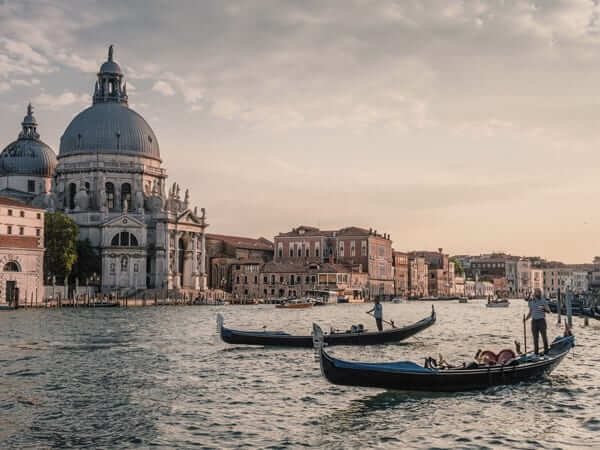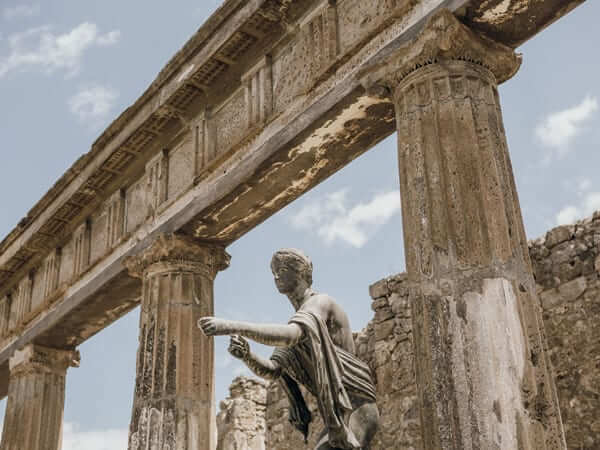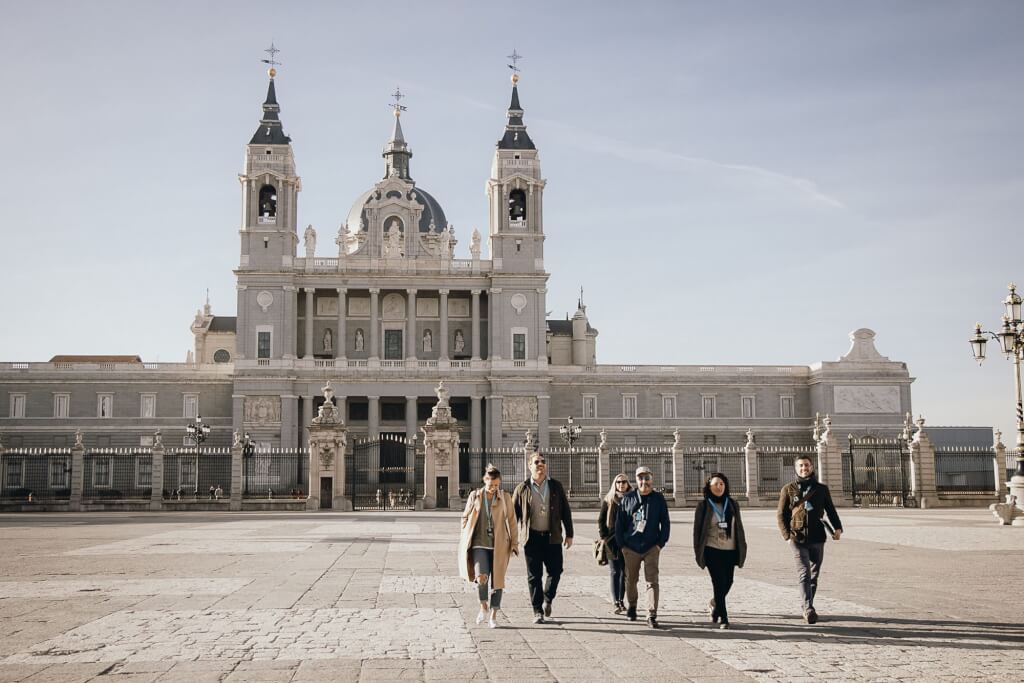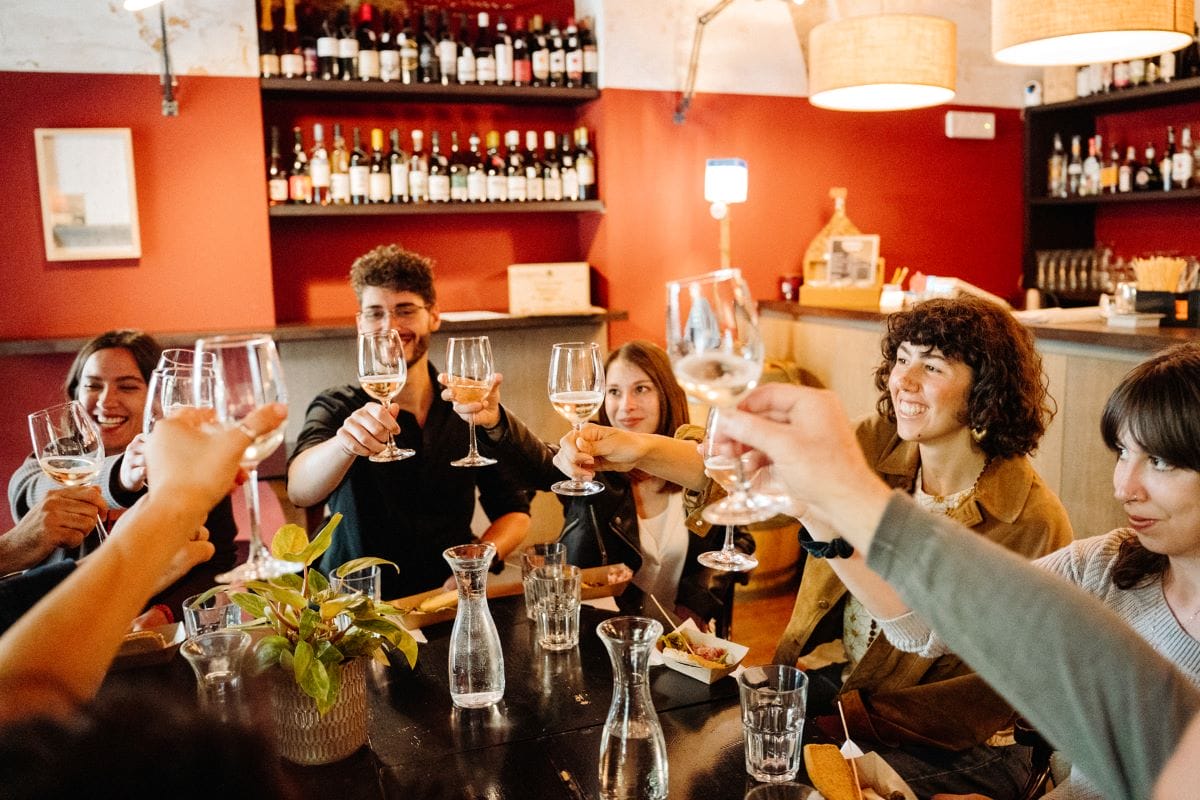
Discover the Best Local Eats & Hidden Gems on a Food Tour in Trastevere Rome
July 15, 2025
Ask a Roman what their favorite neighborhood in the center of town is and you’re likely to hear the word “Trastevere.” This neighborhood, beloved for its charm and timelessness, literally meaning “across the Tiber,” “Trast-ay-vare-ay,” as it’s pronounced, is irresistible. Imagine: narrow, cobblestone lanes flanked by discrete wine bars, outdoor cafes and a plethora of casual restaurants serving up classic Roman staples. One thing is for certain: you can’t say you’ve been to Rome unless you spend at least one evening in Trastevere.
Getting lost in the neighborhood’s tangle of curving lanes is part of the appeal of the neighborhood. The other? Eating and drinking. Trastevere is overflowing with food and drink, spilling out onto the street with every step you take.
All the more reason, you should take a small-group food tour in Trastevere Rome, where an expert local can show you how to criss-cross Trastevere like a pro, revealing the best places to sip an Aperol spritz, graze on an early-evening aperitivo, and eat pasta at an old-school Roman joint. Here’s a pre-food-and-wine-tour primer for you.

You will meet people from different places during the tour.
Table of Contents
ToggleSuppli and Demand
You’ve probably had arancini, the Sicilian stuffed rice balls that nearly every Italian restaurant outside of Italy has on the menu. Now it’s time to try (and adore) suppli. These baseball-sized nuggets of goodness are a Roman staple.
Knowing the possible origins of suppli is to understand why they’re so unforgettable: food historians believe the name is derived from the French word en surprise, a term used for croquettes or other food items encrusted with bread crumbs. Some historians think the origin of the suppli comes from French troops under Napoleon who were in Rome in the early 19th century.
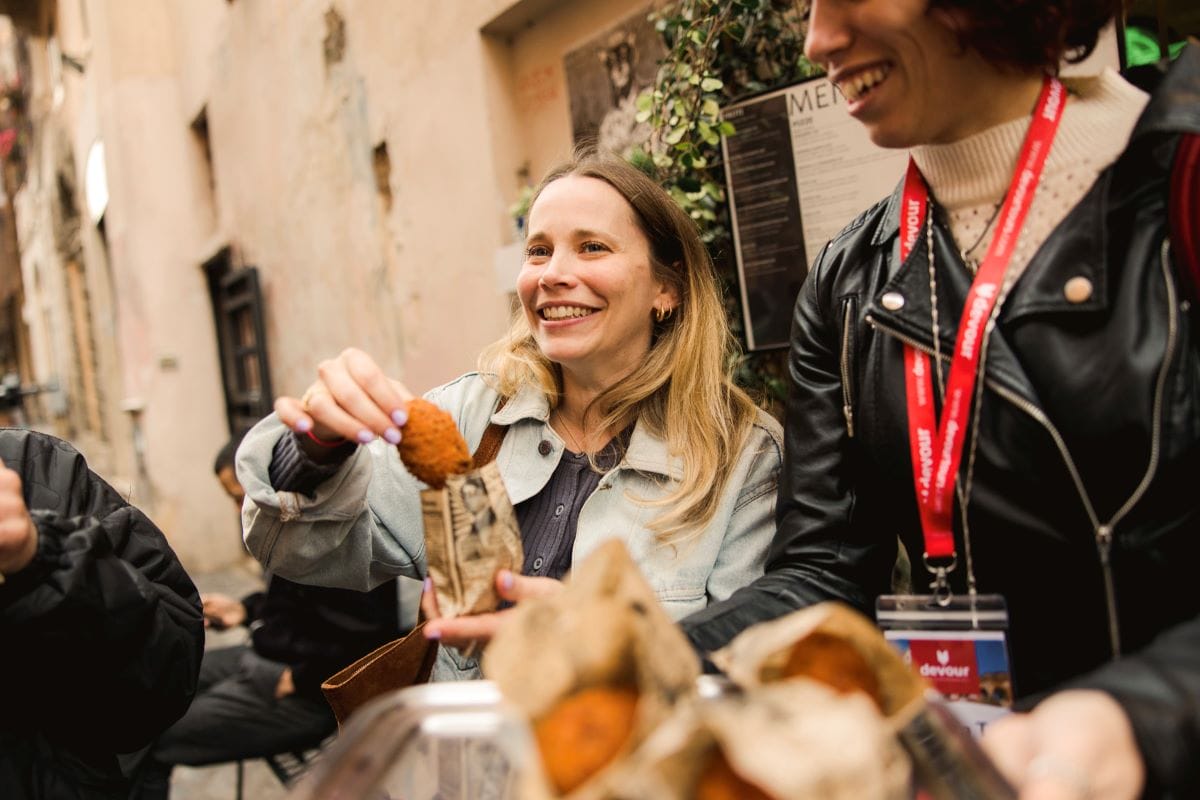
You can’t miss trying Supply when in Rome.
These breaded, fried balls were originally stuffed with minced meat, chicken giblets, and/or provatura, a Roman cheese. That was, in effect, the surprise. You never knew what was going to meet your palate in the middle of the ball. Today, most suppli are filled with rice, tomato sauce and mozzarella. On a food tour in Trastevere Rome, you won’t have to walk far to find suppli, but your local guide will show you the best iterations of this Roman street snack.
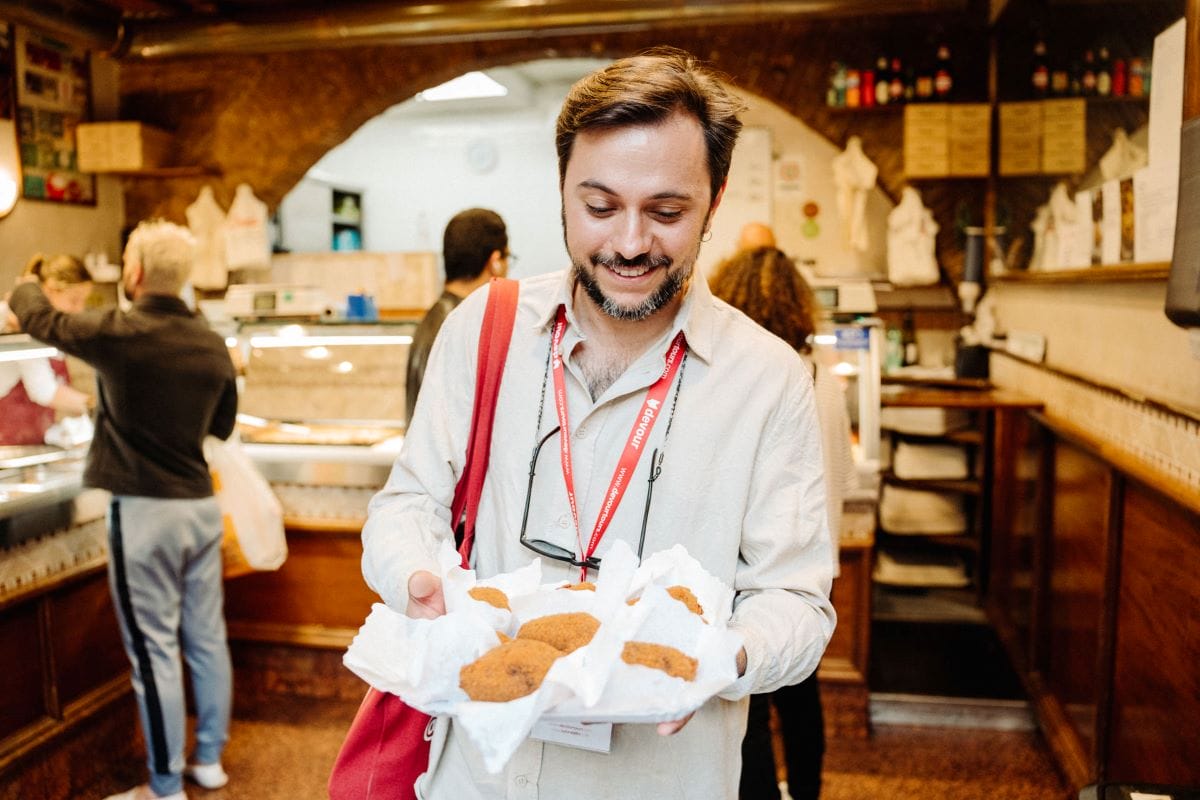
Our local guides will show you the best food in town!
Buon Aperitivo!
The aperitivo is a distinctly Italian pre-dinner tradition. It works like this: at participating bars around Italy, you buy a drink—a glass of wine, a Negroni, or an Aperol spritz, for example—and that opens the door for you to a room of edible delights: big wheels of Parmigiano, prosciutto, salumi, and olives, etc. Some bars even take it a step further by offering more substantial fare, such as pasta and slices of pizza. You’ll likely pay a couple of euros more for your beverage but you’ll also get a feast in return.
The origins of the aperitivo go back to the ancient Rome. The word aperitivo comes from Latin aperitivus, meaning something that opens—in other words, to open one’s appetitive. In the case of the Romans, they would drink sweet, aromatic wines and graze on snacks.
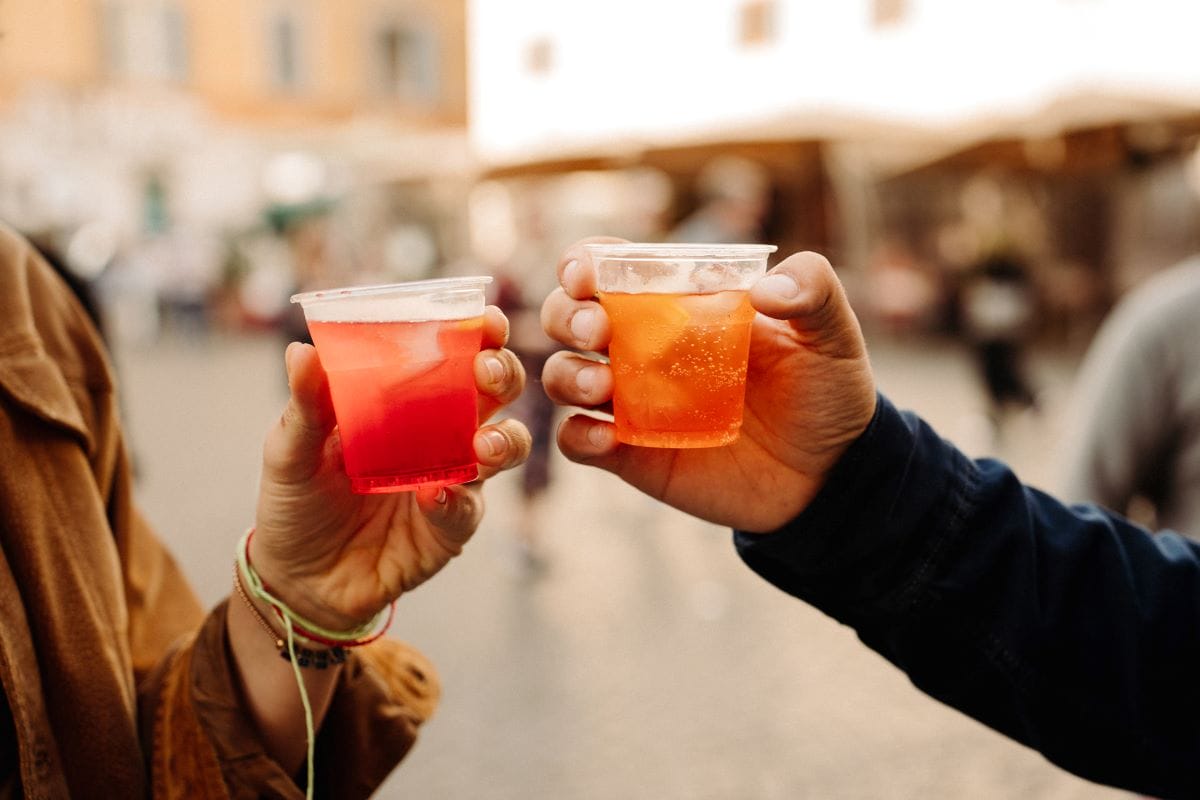
Cheers!
In 1876, the aperitivo further evolved with Antonio Benedetto Carpano who was experimenting by blending fortified wine with aromatic spices and herbs—as one does—and invented vermouth, which became a favorite aperitivo beverage. From this a cafe culture was spawned with Turin denizens sipping vermouth in the late afternoons and early evenings. Naturally, they needed something to fill the belly, so snacks arrived on the scene.
A decade earlier, Gaspre Campari invented his eponymous bitter drink, which became an aperitivo staple, particularly when mixed with sparkling water. Alessandro Martini and Luigi Rossi soon began marketing their very own vermouth around the same time and aperitivo culture was off to the proverbial races.
What started in northern Italy eventually spread south. And today, you can find aperitivo offerings from the top to the tip of the boot-shaped Italian peninsula. And this includes Rome, in general, and Trastevere, in particular.
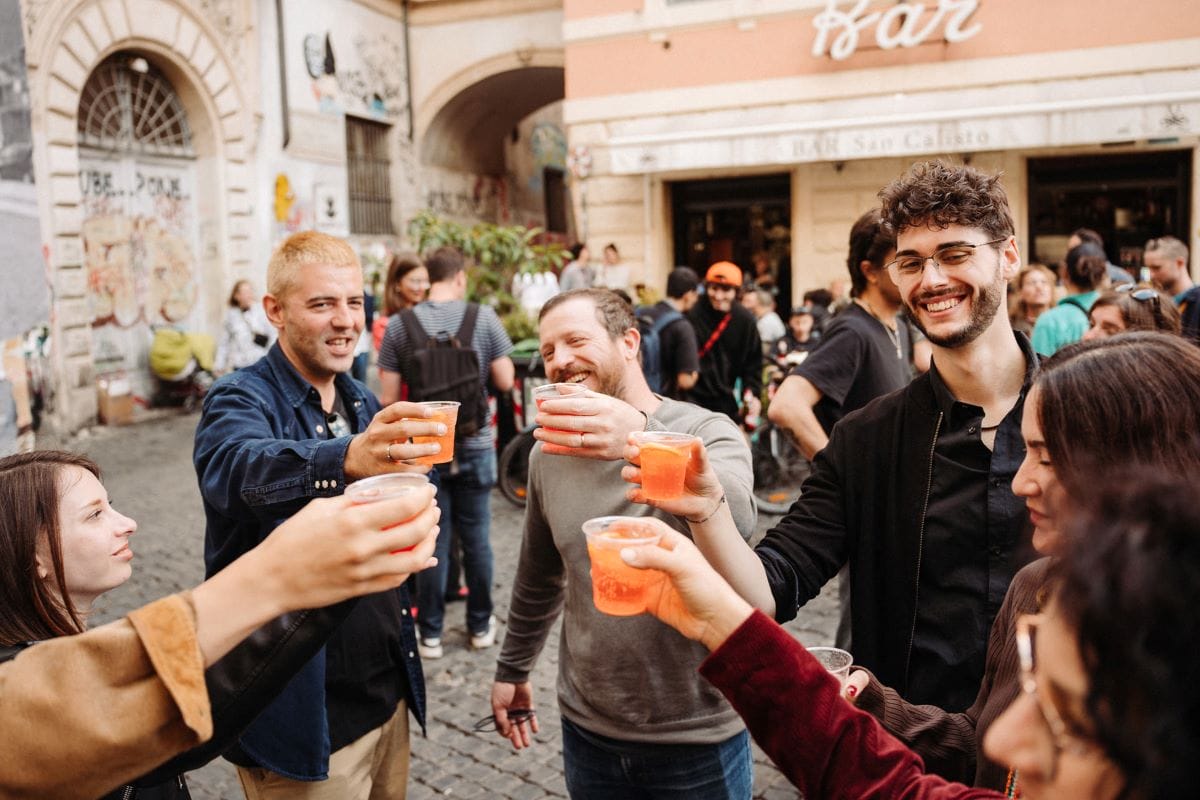
and of course… Aperol Spritz!
Basta Pasta
Whether you take a food tour in Trastevere Rome or not, you’ll inevitably have a bowl of pasta in front of you. In Rome, there are pastas offered from various regions around Italy, but you’re most likely to encounter one or more of the four classic Roman pasta dishes. Here is a quick rundown:
Carbonara
Carbonara has just five ingredients: pasta (only rigatoni or spaghetti can be used, according to the strict guidelines of carbonara), guanciale (pig cheek—sometimes pancetta is acceptable, though), ground black pepper, pecorino romano cheese, and egg. The origins of the dish are murky—though there is a lot of evidence to suggest it originated in post World War II Rome in the late 1940s.
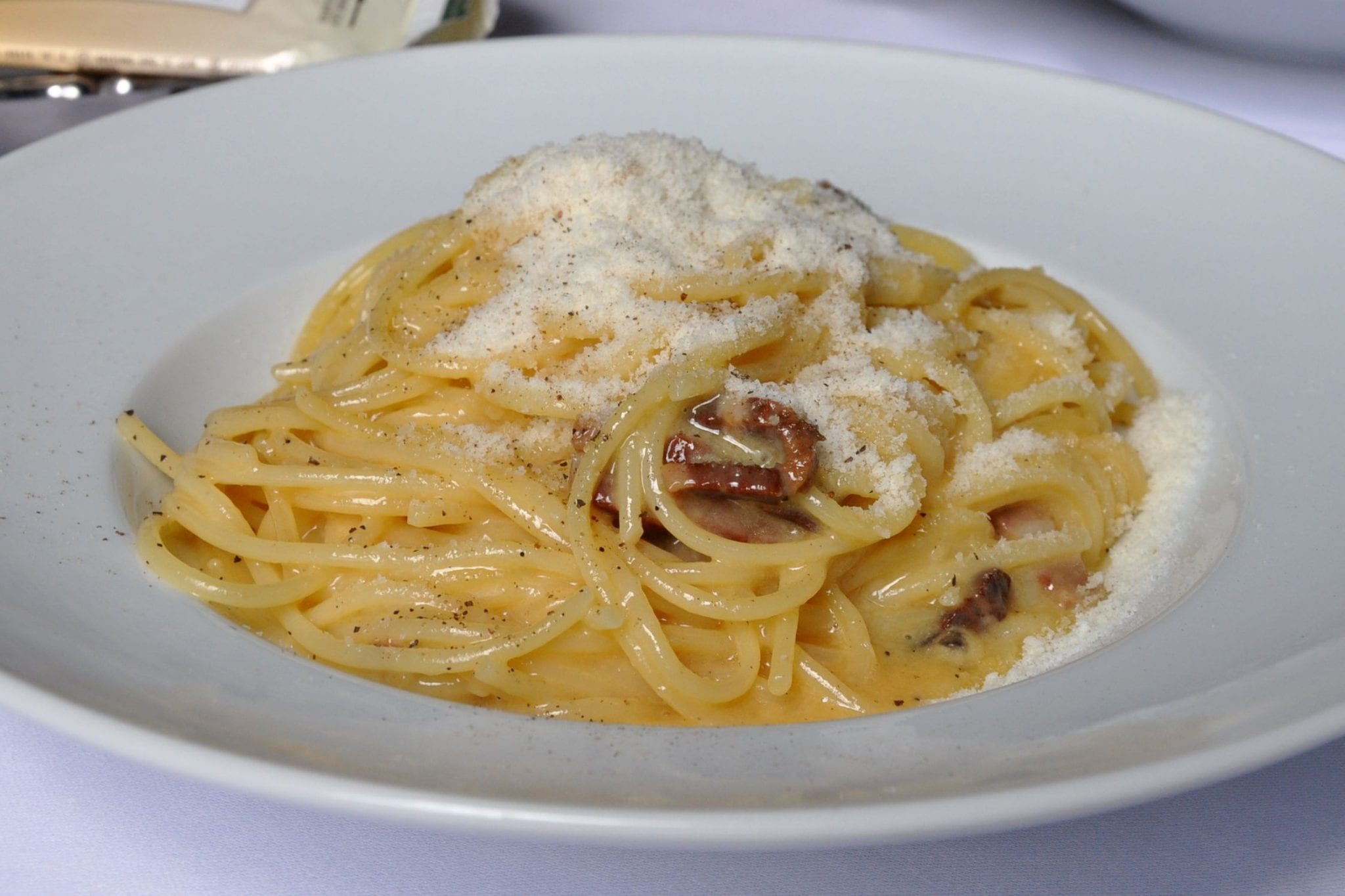
Pasta alla carbonara, a specialty of Rome. Photo by Amanda Ruggeri
Amatriciana
Often served with thick Roman bucatini noodles, Amatriciana is a tomato-based sauce that is sprinkled with pecorino romano cheese, and a few chili flakes. Some argue that the dish comes from the town of Amatrice, located in the province of Rieti in the region of Lazio.
Cacio e pepe
This popular pasta dish integrates spaghetti or tonnarelli, salted water, pecorino romano cheese, and ground black pepper. Are you noticing a pattern here? The origins are unknown, though a popular theory is that it originated with shepherds in the countryside of Lazio.
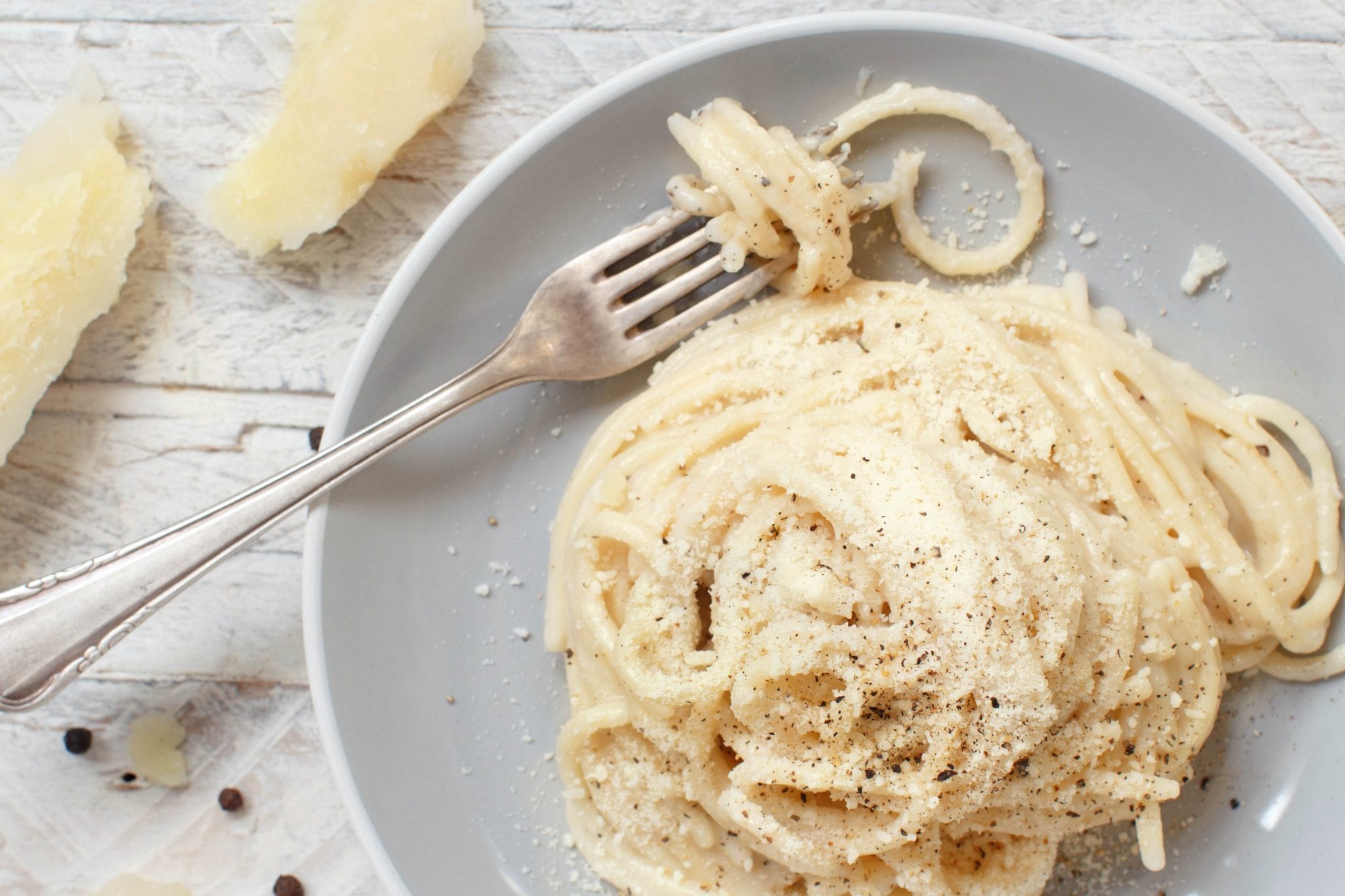
One of our favorite pastas: Cacio e Pepe.
Gricia
The least known (at least outside of the Eternal City) of the four main Roman pasta dishes, Gricia is made up of pasta, guanciale (fatty pork cheek), ground black pepper, and pecorino romano cheese. Some food historians claim gricia is the foundation of cacio e pepe, amatriciana, and carbonara, as it includes all the ingredients of the other three (save for tomatoes). One theory is that it hails from the town of Grisciano, about 90 miles northeast of Rome.
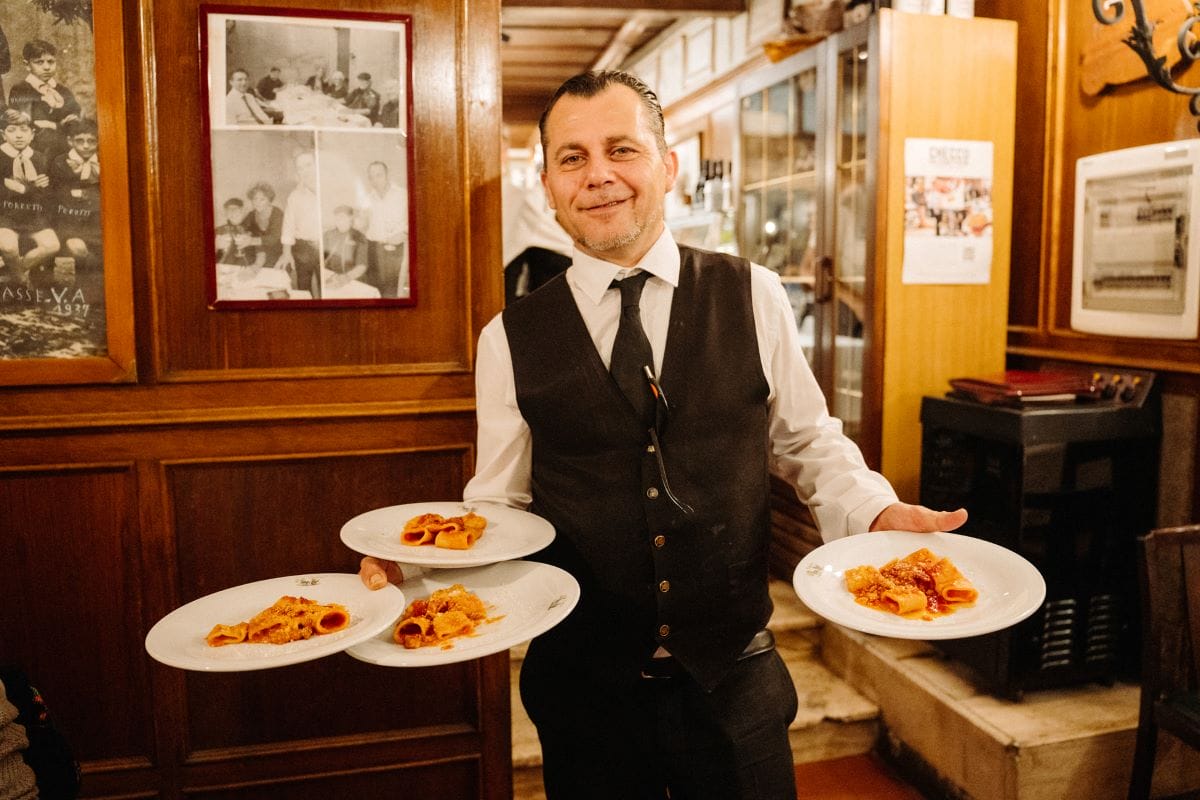
Eat the best pasta in Italy
These are just a few of the Roman delights your palate will be pleased with in Rome, particularly if you take a food tour in Trastevere Rome. Plus, there are ample amounts of wine and Aperol spritzes along the way as well.
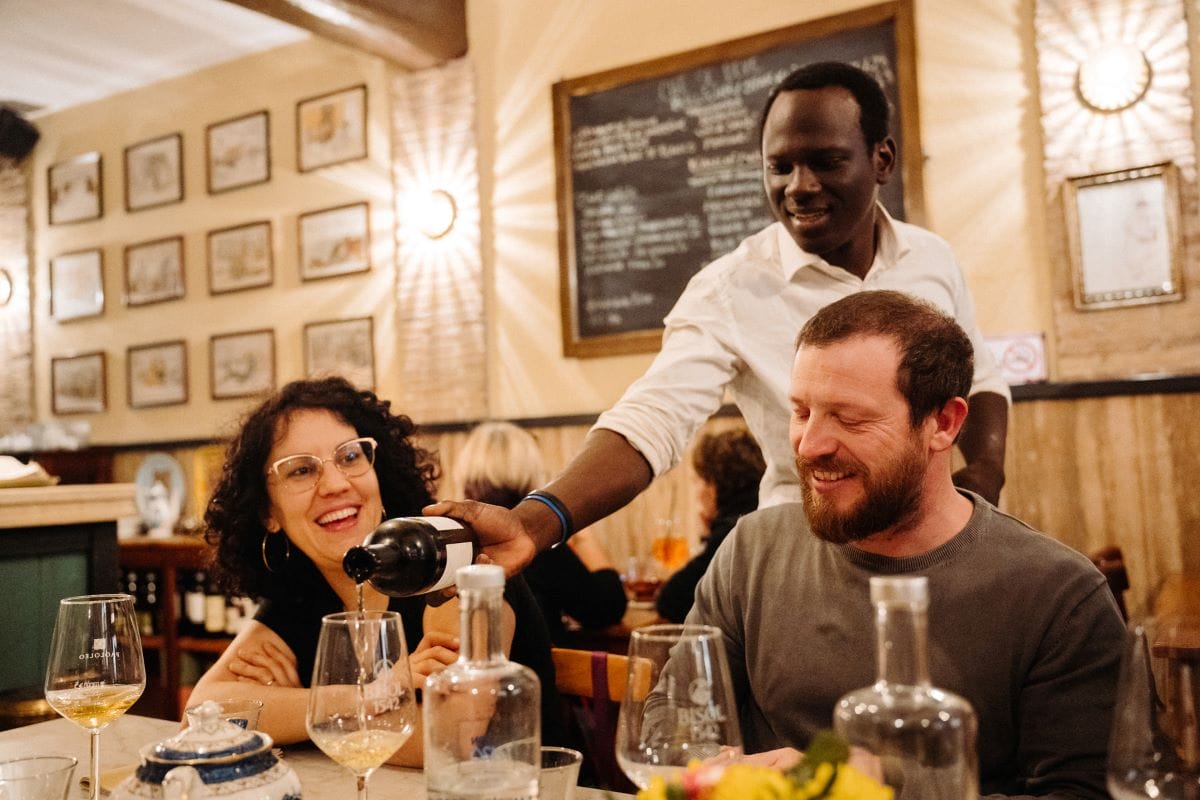
Pair the best food with the best wine!
Ready to turn your wanderings in Trastevere into a full‑flavor adventure?
Book our Food Tour in Trastevere Rome and discover the neighborhood’s hidden culinary gems like a true local. With an expert foodie-guide, you’ll wander into tucked-away trattorias, buzzing wine bars, and authentic family-run spots—five handpicked venues serving up classic Roman bites and regional wines.
Whether it’s creamy cacio e pepe in a cozy osteria or a perfectly paired glass of Italian vino, each stop is an immersive dive into Roman food culture. It’s more than a taste test—it’s a curated experience that lets you “navigate like a Roman,” unlocking secrets most travelers miss. With small-group intimacy and insider access, this tour transforms a casual evening into an unforgettable culinary journey. Don’t just savor Trastevere—fall in love with it. Reserve your spot now and make your Rome trip a delicious memory.
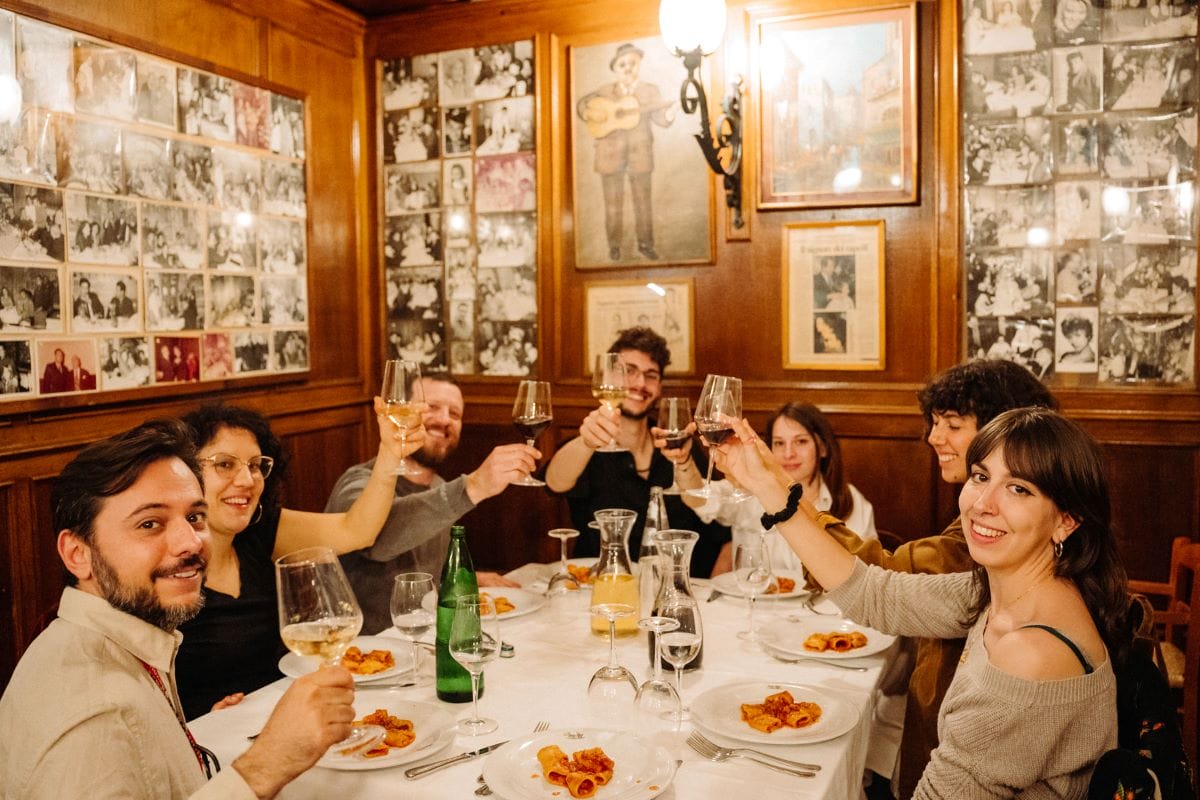
By the end of the evening, you will leave with a full stomach and a happy heart.
FAQs
Why should you take a food tour in Trastevere Rome?
Rome is a big place with thousands of restaurants. In Trastevere alone, there is a high concentration of bars, cafes, and restaurants. Your best bet is to amble into the neighborhood armed with an expert local guide to introduce you to the best spots for Roman street food and Roman pasta staples. You’ll not only eat and drink well, you’ll learn the gastronomic history of Rome at the same time. It’s a win-win!
What time does the tour start and how long does it last?
Your choice: 5 to 8:3o pm or 6:15 to 9:45 pm. That’s 3.5 hours of eating, drinking, strolling, and learning the intriguing history of Roman food in Trastevere
What is the best time to go to Rome?
Rome is no different than a lot of other big European cities in terms of the best time to visit: shoulder season—March to May and September to November. Hotel prices will be more affordable and there will be fewer tourists. If you have to go in the summer, try to avoid August when the heat is at its peak, tourist numbers swell, and some Romans go on vacation, so some restaurants and cafes might shut down for a couple of weeks during that month.
Ready to Eat Like a Local? Don’t miss your chance to taste the real Rome. Book your food tour in Trastevere Rome today and uncover the neighborhood’s best bites, sips, and stories with a local guide by your side
by David Farley
View more by David ›Book a Tour

Pristine Sistine - The Chapel at its Best
€89
1794 reviews

Premium Colosseum Tour with Roman Forum Palatine Hill
€56
850 reviews
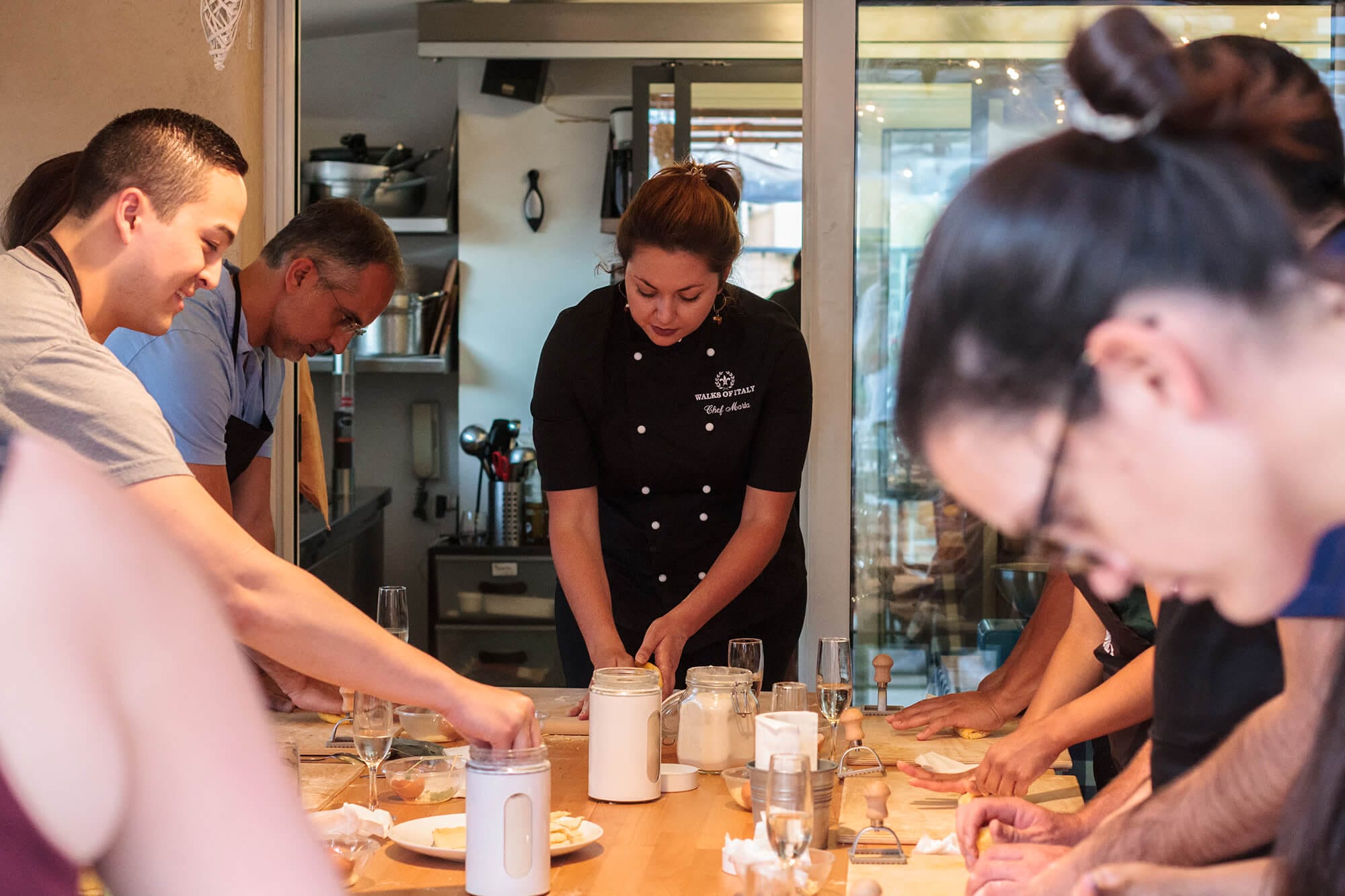
Pasta-Making Class: Cook, Dine Drink Wine with a Local Chef
€64
121 reviews

Crypts, Bones Catacombs: Underground Tour of Rome
€69
401 reviews
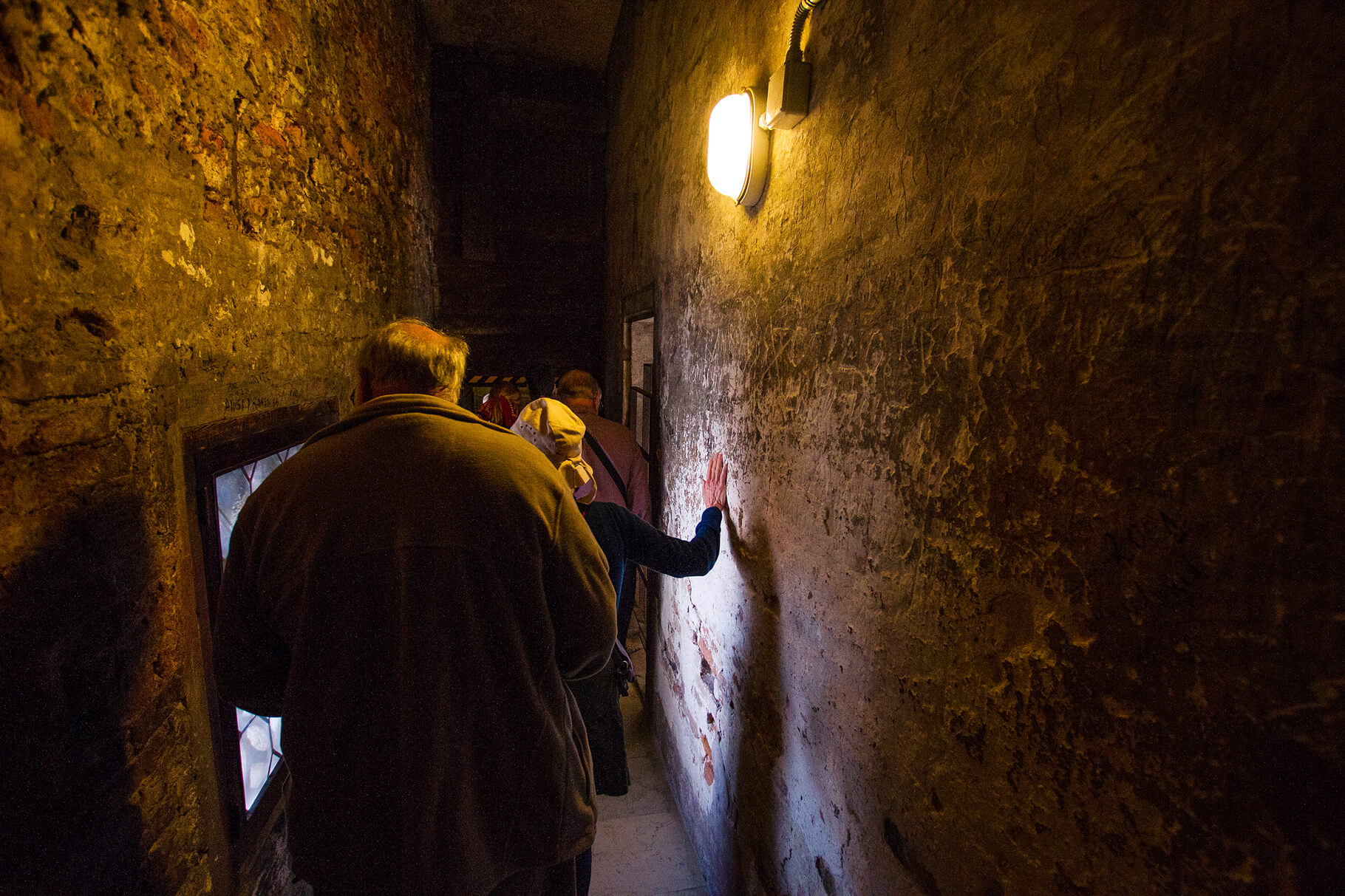
VIP Doge's Palace Secret Passages Tour
€79
18 reviews
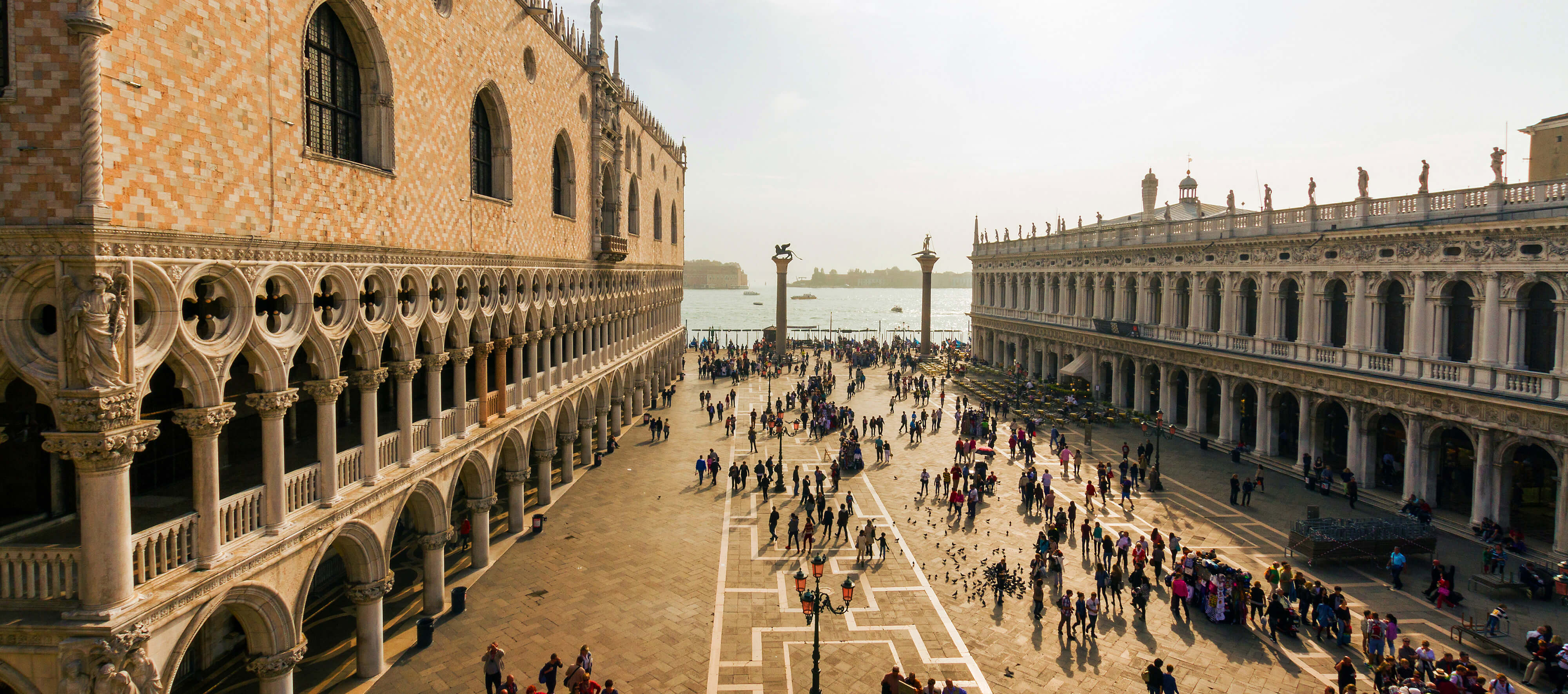
Legendary Venice: St. Mark's Basilica, Terrace Doge's Palace
€69
286 reviews



